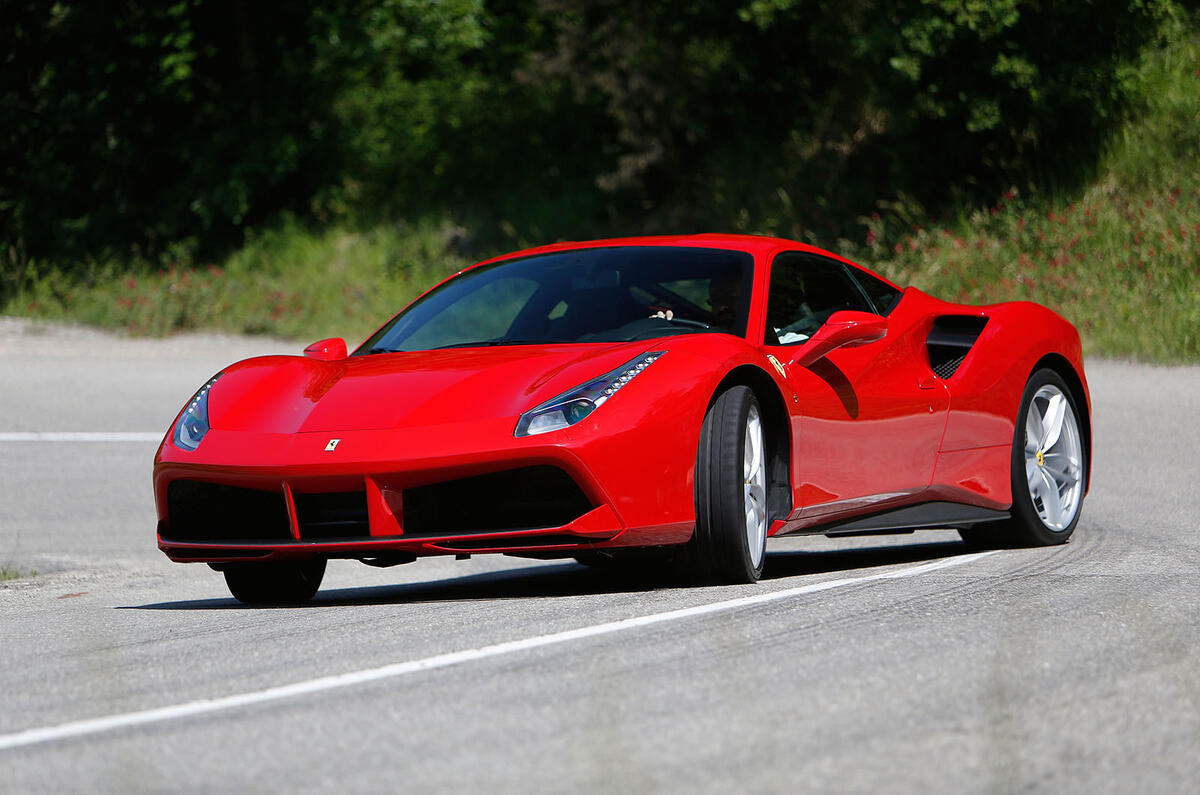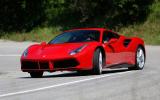What is it?
The Ferrari 488 GTB, replacement for the 458 Italia. Before we drove it, it was presented to us via the medium of graphs. Lots of graphs, charts and illustrations. The message was that the 488 might be based ostensibly on the same architecture as that of its predecessor, but don’t think it’s a facelift.
It should be duly noted, then, that there are lots of new things on the 488 GTB. About 85% of its things, in fact. Chief among them is – gasp - a turbocharged engine. More graphs, and message number two: this is still very much a Ferrari motor. Duly noted? We’ll see.
The new engine is turbocharged because it’s smaller, leaner and more efficient this way. And, inevitably, more powerful. By a lot.
The unit, still with a flat-plane crankshaft, now displaces only 3.9 litres, rather than the 4.5-litres of its naturally breathing predecessor, but its two IHI turbos, each with dual scrolls and many, many friction-reducing parts (I’ve seen the diagrams), spool up exceptionally quickly. When boosting, they make 661bhp, although now between 6200rpm and 8000rpm rather than the 9000rpm of the 488’s predecessor.
What really makes this engine a Ferrari engine, we’re told (yes, yes, we’ll see), is that the torque is artificially reduced at lower revs in lower gears. Only in seventh is full torque – 561lb ft – available, at 3000rpm. It’d be faster if Ferrari let it all loose, all the time. But it would also sound a bit crummy, say its engineers. Unleash the full gamut of pounds-feet in every gear and the noise would be a constant burp rather than a Marenello-spec yelp.
I’m happy to believe everything else is Maranello-spec before I’ve even driven the car, because if you doubt the value of Ferrari’s limited-run project cars, the 488 GTB is the perfect case study. The steering rack is from the 458 Speciale, so a bit quicker than the regular 458 Italia’s. Ditto the adjustable dampers and the tyre sizes. Brakes are exactly the same as LaFerrari’s and the 488 GTB has a new generation of the Speciale’s Side Slip Control called, imaginatively, SSC2.
SSC2 not only acts via the electronically controlled limited slip differential like SSC1 did but now also softens or firms the dampers subtly to give you an even more carefully metered dose of opposite lock should you want to look like a hero and are bold enough to keep the throttle pinned in a 661bhp supercar.


















































Join the debate
Add your comment
How does autocar test
And with one or two drivers
Greetings Roger
Graphs?
Very disappointing from
No more music, just a sound...
Sad days for automotive.
david RS wrote: Very
You must be joking? Ferrari didn't go turbocharged by choice, they were forced into it by gov't regulations just like every other manufacturer. And they have put an incredible amount of effort into making this engine seem naturally aspirated from the drivers seat (the noise, the response, the artificially limiting of the torque at low revs). I hate turbocharged engines as much as the next guy, but I absolutely praise Ferrari for this, as far as I'm concerned this is a big leap forward for turbocharging. AMG has done a fine job with the GT as well, but this is something different.